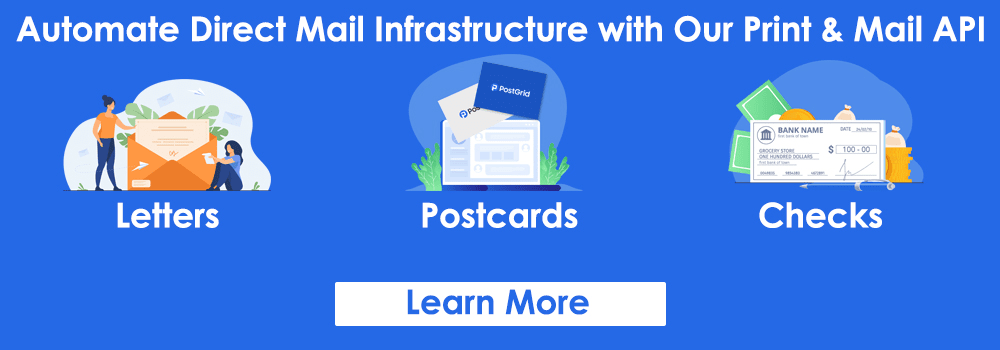
Best Tips to Ensure a Patient-Centric Approach in Healthcare
Trust and communication are the cornerstones of the healthcare industry. You must know that this sector is continuously evolving with emerging demands. Today, a patient-centric approach is not an option, but a necessity for each organization.
What are you doing to remain relevant and fulfill the demands? The Canadian healthcare sector features one of the leading infrastructures in the world. Even people from different countries are visiting our country to get world-class facilities.
The Canadian Institute of Health Information says there was a spending of $308 billion on healthcare in 2021. This astonishing figure almost contributes 12.7 percent of Canada’s GDP for that year.

These figures show the importance of a robust healthcare infrastructure. Patient-centricity is vital to ensure the active participation of patients in their healthcare journey.
Physicians and facilities are also trying hard to satisfy the needs and preferences of these patients. This blog will discuss “What is a Patient-Centric Approach?”
Healthcare workers should equip themselves with better ways of administering patient preferences and processes.
What is a Patient-Centric Approach? What Is So Important?
Patient-centered care’s main characteristics in healthcare services are respect and dignity. It encourages the providers to engage with patients during their care path. Every patient has their particular requirements and also preferences. Tools like the best EMR for small practice can support this approach effectively.
We must create an individual consultation, diagnosis level, and treatment plan. It is vital to educate and develop the patient experience to offer high-quality services. Understand your patients’ thoughts and feelings to get the best out of patient care. There are some useful tools, products, and also solutions contributing to the introduction of the approach based on positive healthcare environment building.
Many organizations are working together to enhance patient experiences. They get assistance from training, modern technology, and innovative processes.
How Does a Patient-Centric Approach Pharma Works?
A patient-centric approach puts the patients at the center of their healthcare rights. Physicians and facilities ensure this by;
- They try to treat their patients with respect, dignity, and compassion.
- Ensure communication and coordination between appointments and services.
- Share the care between a healthcare service or hospital.
- Tailor the services according to the patient’s needs and goals.
- Ensure the active participation of the patient in their healthcare journey.
A patient-centric is more than how the healthcare professional treats. It also emphasizes how healthcare services and governments create and run policies.
What are the Fundamentals of the Patient-Centric Approach?
Patients are the core of any health plan. They require sufficient attention to satisfy their needs and preferences. You must uphold the following;
Continuity of Care Builds Engagement
A successful clinician or caregiver depends on a team of multiple professionals. Together, they deliver focus on a common goal. People also get the ideal coordinated services. A patient-centric approach avoids human errors.
Collaboration and Empathy
Any healthcare facility is dependent on these qualities between providers and patients. Active participation in healthcare decisions can engage your patients better.
Display respect, actively listen, and respond to your patient. A patient-centric approach always focuses on replying to concerns. Individuals feel better when they get empathy and care.
Customization is Vital for Personal Care
Do you like receiving generic solutions? Patients also expect personalized solutions from your practice. Providers must develop care plans according to different lifestyles. The best practices often consider medical history, context, and lifestyle.
Consistent Quality of Care
Patients may choose from multiple providers. You must provide quality care instead of generic plans. Successful providers never compromise with care quality in a diagnosis or treatment plan.
Don’t undermine evidence, safety, efficiency, and effectiveness for a patient-centric approach. Physicians always respect each patient’s decisions and preferences for healthcare. They can expect better healthcare results.
Access to Care
Canada’s healthcare system is great! So, doctors and hospitals need to keep costs low and offer all kinds of care: checkups, urgent stuff, and emergencies. Everyone in Canada should have the care they need
Patient Engagement Throughout the Journey
Every patient’s journey is different, like steps in a story. Doctors and hospitals should make patients feel involved and active in their care. This helps patients take charge.
Modern tools like updates and messages can help keep patients in the loop, just like good customer service. The better patients feel included, the better their care might be.
How to Work on a Patient-Centric Approach?
Lots of companies struggle to truly focus on patients. It’s hard to make sure everyone’s happy and gets healthy. So, how can we fix this? What makes patients happy with their care?
Here are some ideas to tackle these hurdles;
Map Your Patient Journey with Optimization
Surveys help clinics and physicians gather patient data. It provides valuable lessons from different patient interactions and services.
They can create detailed patient journeys based on these reports. It is vital to optimize healthcare services. Patient feedback can build better experiences.
A patient-centric approach is reliant on these journeys.
Trust is Everything
Successful providers prioritize trust before anything. People often distrust healthcare professionals and pharma companies. Trust and quality of life are more critical than only focusing on profits.
A patient-centric approach with regular interactions can save the day. It focuses on showing compassion and building credibility. Patients get higher motivation to appear for repeat visits.
Provide Information and Education
Many patients are curious about their medical condition. They face anxiety if they can’t understand anything. Providers can help these patients with educational materials.
A patient-centric approach explains their clinical trials, progress, and prognosis. It also ensures autonomy and self-care. Sufficient steps are necessary to educate the patients with facts.
Use Plan Language and Avoid Jargon
Healthcare professionals have in-depth medical knowledge. However, patients won’t understand complex terms and conditions. Only a few have a healthcare literacy.
A patient-centric approach encourages providers to use plain language. Patients and their families will better understand the situation. Technical language is often confusing and frustrating.
Provide Emotional Support
Medical conditions often create stressful situations for people. Some patients feel fear and anxiety over their illness. Providers must provide emotional support during diagnosis and treatment.
Emotional support is vital to calm these patients. Mental stress can increase physical illness and slowdown recovery speed. A patient-centric approach encourages showing mental support to calm down people.
Maintain Continuity and Transition
Your healthcare journey doesn’t end with treatment. Smooth recovery depends on “smooth transitions” back to daily life. This means clear post-discharge plans: explaining diet, medications, and limitations in simple terms.
A patient-centric approach ensures these plans consider your individual needs and preferences. Continuity of care, with regular follow-ups and the same doctor when possible, leads to better long-term health.
How Patient-Centric Providers Deal with Patients?
Imagine doctors using smart computers to help them focus on what’s best for “you”. These programs can schedule appointments and plan treatments in a flash, saving you time and hassle**.
They also help doctors track your records and communicate effectively. Of course, these programs must be secure and reliable so you can trust your information is safe. With the right tools and information, doctors can truly prioritize your individual needs.
What is the Importance of a Patient-Centric Approach?
It’s a win-win for everyone! Happy patients mean fewer readmissions and more satisfied customers for hospitals. Doctors see their treatments work better and patients live healthier lives.
Let’s explore more benefits:
Better Engagement
When doctors listen and explain things clearly, patients understand their health and feel empowered. It’s like having a personal healthcare team in your corner. Patient-centered care leads to improved health outcomes, reduced costs, and higher patient satisfaction.
Higher Participation and Collaboration
Providers ensure timely and successful decisions with a patient-centric approach. Healthcare settings can expect better synchronization and collaboration.
Superior Health Outcomes
Healthcare organizations can improve patient satisfaction and outcomes with a patient-centric approach. Everyone works towards a common goal to enhance the quality of care.
Easy Resource Allocation
A healthcare firm fulfills hundreds of patients. It is challenging to allocate necessary resources on time. A patient-centric can solve this problem with multi-level care planning.
Establish Competitive Advantage
Only a few practices are implementing a patient-centric approach. However, this model is ideal to improve your care quality and cost management.
How Technology is Playing a Critical Role in a Patient-Centric Approach?
Modern technology has a significant place in the medical sector and its processes. Professionals can manage vast data sets to provide the best care. The rising global standards are also increasing patient expectations.
These are some popular technologies behind a patient-centric approach;
Communication Tools
Talking to your doctor is super important! To make things easier, there’s this cool tool called an Electronic Health Record (EHR). It’s like a super-organized health file on your doctor’s computer. EHR for private practice stores all your medical history, medications, and appointments in one place.
Even cooler? EHRs can connect with automated direct mail systems. Imagine your doctor sending you personalized letters with health tips and appointment reminders, all without extra work for them! This helps keep you on track and informed, even outside the office.
Artificial Intelligence (AI)
Simple English Rephrase:
Healthcare in the 21st century is getting a big boost from intelligent technology called AI. It’s like a helpful robot doctor making things faster and easier for everyone.
Here’s how AI helps:
- Fancy robots help surgeons operate with even more precision.
- Computers take over boring paperwork, freeing up doctors and nurses for patients.
- Video calls with doctors are becoming the new normal, saving everyone time and travel.
- AI assistants help nurses manage their workload.
Smart doctors use AI to predict who might get sick, so they can give extra care to those who need it most. It’s all about taking care of patients in the best way possible.
So, what does the future hold? More AI helping doctors and patients, making healthcare better and more convenient for everyone!
Telehealth Software
Imagine getting healthcare from your phone, anytime you need it! That’s what telehealth apps are all about. These handy tools let you connect with doctors and nurses remotely, right from your pocket. No more waiting rooms or stressful travel – just a quick video call to get answers and advice for your daily health concerns.
Telehealth wasn’t as big before, but the pandemic showed its true power. When staying home was crucial, these apps kept millions connected to healthcare. Even now, it’s become a popular choice for its convenience and focus on your needs.
Digital Therapeutics
Imagine wearables like smartwatches and smartphones helping doctors understand your illness and daily habits better.
These tools gather accurate data about your health, giving doctors a clearer picture and the ability to predict how your illness might behave. This helps them choose the best treatment for you!
How PostGrid Direct Mail API Can Help You Ensure a Patient-Centric Approach?
Smooth communication channels are vital to reach your patients. What could be better than engaging them directly with physical mail? It is just like having your salesperson directly knock on their door.
Providers need streamlined conversations to establish facts and loyalty. Offline channels often feel more direct and professional. Many healthcare firms use direct mail automation tools to boost their communication strategy.
PostGrid print and mail API works flawlessly in ensuring a patient-centric approach. Canadian providers can use our API for sending personalized letters, postcards, and self-mailers.
The API automates every campaign to save you time and effort. Say goodbye to manual mailroom management when you have PostGrid. We provide highly scalable solutions for campaigns of any scale.
How PostGrid is Ideal for Healthcare Firms?
Personalized Messaging
Do you want to customize your mailpieces? Our API can do it with variable data printing and a built-in template editor. Personalize individual pieces according to your preferences.
Fully Compliant with Regulations
PostGrid and all its partners are compliant with PIPEDA requirements. We follow the necessary guidelines to ensure security and confidentiality. You can trust us to handle sensitive information via direct mail.
Smooth Integrations with Existing Systems and Software
We make it incredibly easy for healthcare firms to integrate our API with their existing software. This integration does not require any code.
Fully Automated Direct Mail Campaigns
Professionals can automate their campaigns with event-based triggers. It saves a lot of time and effort to optimize offline communication.
Sign up now to build a patient-centric approach with offline communication.











